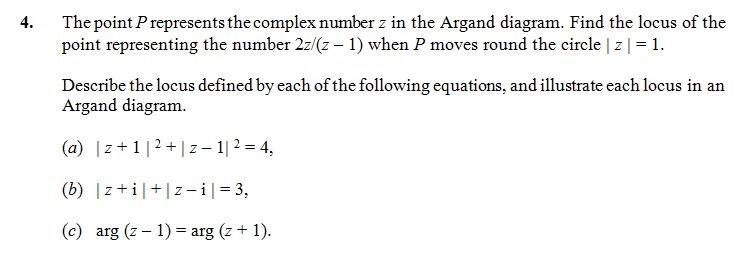Mathematics examination paper from 1970
I thought some of you might enjoy having a go at the A Level Special Paper from 1970. This was the equivalent of the AEA and was designed for the top 15% of A Level candidates. You had to answer 8 questions out of 10 in 3 hours.










Scroll to see replies
This is pretty tough for A level standard. Guess it really was harder back in the day
gummers
Wow nice nice post dude,
sure a lot of people will be interested in this!
Think i might give it a go see what i get, you get mark scheme?
sure a lot of people will be interested in this!
Think i might give it a go see what i get, you get mark scheme?
No mark scheme I'm afraid. I'm sure the TSR team can create one. Use spoilers though!
coldfusion
This is pretty tough for A level standard. Guess it really was harder back in the day
Shayke
Wow, thanks for posting.
Really does show how the syllabus has changed. Sure, A level Maths can be difficult. But compared to 1970, its been dumbed down greatly.. =|
Really does show how the syllabus has changed. Sure, A level Maths can be difficult. But compared to 1970, its been dumbed down greatly.. =|
This isn't a-level standard, this is more comparable to STEP.
2. looks easy
Wait a minute I will post the next one. For all values, looks like they don't want induction. Power series I'm thinking. Yeah, that could work.
Spoiler
Wait a minute I will post the next one. For all values, looks like they don't want induction. Power series I'm thinking. Yeah, that could work.
It doesn't say integer values of x simp.
around
This isn't a-level standard, this is more comparable to STEP.
Yeah looking at it now it does seem like STEP II standard
Rep to anyone who can answer all them questions!
Yes I did realize that before you said that.

Okay 2. the correct way
Spoiler
Question 1 the first part, looks weird. Maybe, I should read about depressed cubes.
Although, the next part seems to be able to be done by just using the old sum of roots method.
Although, the next part seems to be able to be done by just using the old sum of roots method.
I wouldn't be able to answer it. I wouldn't be able to answer one from nowadays either.
2
a)
e^x >/= x+1
sketch y=x+1
sketch y=e^x
intercept at (0,1) since e^0 = 0+1
for x<0 d(e^x)/dx < 1 hence for all x<0 e^x is always grater than y=x+1
for x>0 d(e^x)/dx >1 hence for all x>0 e^x is always greater than y=x+1
don't know if it counts as proof...?
same idea for part B)
but again, will only suffice if my method of 'proof' counts
for ii
a = 3-2*(epsilon)
b = c = epsilon
so for maxima: (a^2+b^2+c^2) < 9
and for minima: (1+1+1) = 3
so 3<or=(a^2+b^2+c^2)<9
I'm geussing that derivatives must be used to show that these are the maxima/minima but I cba
something like that methinks
a)
e^x >/= x+1
sketch y=x+1
sketch y=e^x
intercept at (0,1) since e^0 = 0+1
for x<0 d(e^x)/dx < 1 hence for all x<0 e^x is always grater than y=x+1
for x>0 d(e^x)/dx >1 hence for all x>0 e^x is always greater than y=x+1
don't know if it counts as proof...?
same idea for part B)
but again, will only suffice if my method of 'proof' counts
for ii
a = 3-2*(epsilon)
b = c = epsilon
so for maxima: (a^2+b^2+c^2) < 9
and for minima: (1+1+1) = 3
so 3<or=(a^2+b^2+c^2)<9
I'm geussing that derivatives must be used to show that these are the maxima/minima but I cba
something like that methinks
jj193
taylor/maclauren series aren't on A-Level...
they were back then! but that isn't the approach expected ... i looked at gradients too
Quick Reply
Related discussions
- What's the best way to revise for maths?
- A-level Exam Discussions 2024
- HELP!! Unable to find the examination board I sat my Mathematics GCSE back in 1992/93
- further maths level grade boundaries
- Self teaching AS or A-Level FM
- Simple ratio problem in A-Level Biology
- Am I required to write the calculator model name on my paper?
- Website for Past Papers
- Confused about A Level 'sittings', 'final grades,' and 'final papers'
- How can I achieve 8-9 grades at GCSE?
- The Easiest GCSE
- Is this possible
- School is killing me - Y11 "GYG" 2022
- Which program is better for self-study IB DP or A-levels with additional subjects?
- Edexcel A Level Further Mathematics Paper 4A (9FM0 4A) - 26th June 2023 [Exam Chat]
- Cardiff Met PGCE Maths Equivalency Exams
- How much a hindrance will my AS FM predicted be towards Cambridge application?
- GCSE Exam Discussions 2024
- AQA A level The making of modern britain
- Cambridge requirements for Indian students
Latest
Trending
Last reply 3 days ago
Did Cambridge maths students find maths and further maths a level very easy?Last reply 2 weeks ago
Edexcel A Level Mathematics Paper 2 unofficial mark scheme correct me if wrongMaths
71
Trending
Last reply 3 days ago
Did Cambridge maths students find maths and further maths a level very easy?Last reply 2 weeks ago
Edexcel A Level Mathematics Paper 2 unofficial mark scheme correct me if wrongMaths
71





